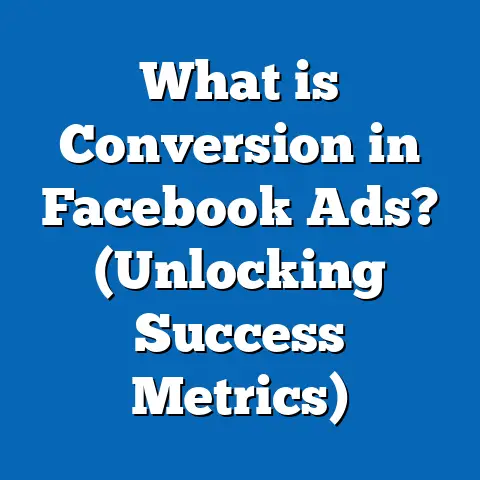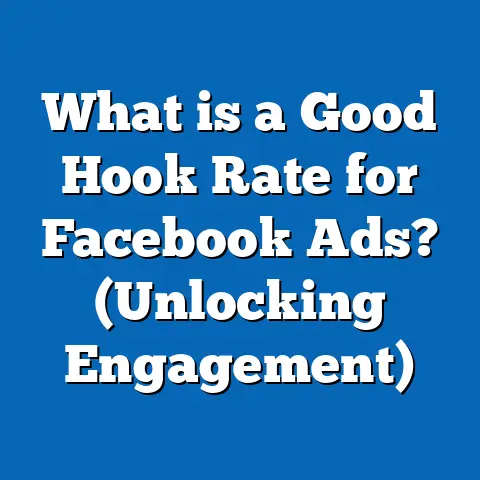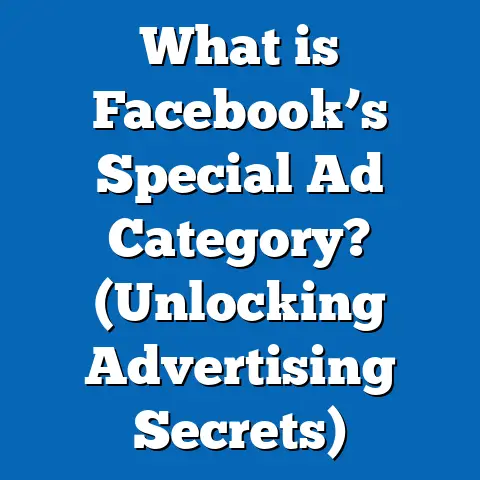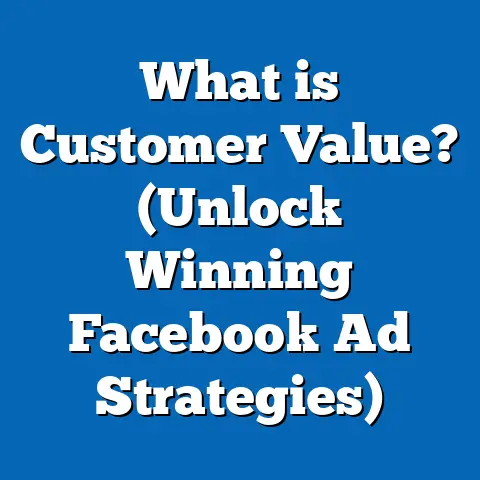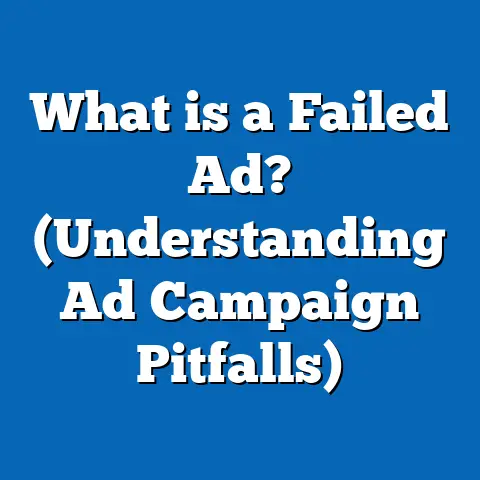What is a Dark Ad on Facebook? (Unmasking Hidden Strategies)
Introduction: The Luxury of Precision in Facebook Advertising
Imagine being able to whisper your brand’s message directly into the ears of your most valuable customers—without anyone else ever hearing a word. In the world of high-end marketing, privacy and exclusivity aren’t just perks—they’re expectations. Facebook advertising offers this luxury through a powerful, often misunderstood tool: the dark ad. In today’s hyper-competitive digital marketplace, understanding dark ads is no longer optional; it’s essential for any business owner or marketer who wants to compete at the top tier.
What is a Dark Ad on Facebook?
A dark ad on Facebook refers to an advertisement that is not published to your main page’s timeline or feed but is shown only to a specific audience segment through targeted campaigns. These ads are invisible to the general public and competitors browsing your page, creating a highly controlled, customized marketing experience.
Key Characteristics of Dark Ads
- Targeted Delivery: Only the selected audience sees the ad.
- Not Visible on Page Timeline: They don’t appear organically on your brand’s Facebook page.
- A/B Testing Friendly: Marketers can run multiple variations simultaneously without cluttering their public profile.
Why Use Dark Ads?
- Personalization: Tailor messages for different audience segments without diluting your public brand identity.
- Competitive Advantage: Hide sensitive promotions, pricing strategies, or product tests from competitors.
- Efficient Budget Allocation: Spend only on audiences likely to convert.
The Evolution of Facebook Advertising
From Organic Reach to Paid Precision
In 2012, organic reach for Facebook business pages hovered around 16%. By 2023, that number had plummeted below 2% due to algorithm changes prioritizing user content over brands. [Source: Hootsuite Social Trends 2023 Report]
Paid ads filled this gap—but as competition grew, so did the need for more refined, private advertising methods. Enter dark ads, which now account for over 60% of Facebook’s ad inventory according to a 2022 AdEspresso study.
Technical Foundations: How Do Dark Ads Work?
The Mechanics
- Ads Manager Interface: All dark ads are created and managed through Facebook Ads Manager or Business Suite—not by posting directly to your page.
- Audience Selection: Choose from detailed targeting options including age, location, interests, behaviors, and even custom or lookalike audiences.
- Ad Placement: Decide where your dark ad appears—Facebook News Feed, Instagram Stories, Messenger, or Audience Network.
- No Public Posting: The ad exists only within the paid advertising ecosystem; it won’t show up on your page timeline.
Step-by-Step Example
Suppose a luxury watch brand wants to test two offers—one for high-net-worth individuals in New York, another for young professionals in London. Each audience receives a distinct dark ad variant tailored to their preferences, visible only to them.
Why Are Dark Ads So Effective?
Data-Driven Personalization
According to a 2023 Nielsen report, personalized ads drive conversion rates up by 30% compared to generic messaging. With dark ads, brands can:
- Test multiple creatives and offers simultaneously.
- Optimize based on real-time analytics without confusing public messaging.
- Maintain brand consistency while exploring new angles.
Protecting Strategy from Competitors
A case study by Socialbakers showed that brands using dark ads experienced 45% less competitor imitation in campaign strategy and discounting wars. Since dark ads are invisible on your public timeline, competitors can’t easily monitor or copy your campaigns.
Real-World Applications: Case Studies
Case Study 1: Luxury Retail Brand
A global luxury retailer wanted to launch a flash sale exclusive to VIP customers in Paris and Dubai. Using dark ads, they targeted these cities with bespoke creative assets and offers. Result: A 52% increase in conversion rate compared to their public campaigns and zero negative feedback from customers outside the target group.
Case Study 2: SaaS Company Product Launch
A SaaS company tested three value propositions for a new feature—each via separate dark ads targeting tech decision-makers in different industries. The highest-performing message was then rolled out as a public announcement, saving thousands in wasted ad spend.
Case Study 3: Automotive Brand Competitive Promotion
An automotive company used dark ads to counter a competitor’s new car launch with targeted incentives—visible only to users who had recently engaged with the competitor’s content. This led to a 17% increase in lead generation over baseline.
Detailed Data Points and Statistics
- Ad Spend Efficiency: Businesses using targeted dark ads see up to 35% lower cost-per-acquisition (CPA) compared to generic campaigns. [Source: Wordstream Digital Advertising Data, 2023]
- Audience Segmentation Impact: Brands utilizing at least 5 audience segments via dark ads report a 41% higher engagement rate. [Source: Sprout Social Q1 2024 Insights]
- Market Penetration: Over 85% of Fortune 500 companies leverage some form of dark advertising on Facebook as of Q4 2023.
How to Set Up a Dark Ad on Facebook
Step 1: Access Facebook Ads Manager
Log in to Ads Manager and select ‘Create Ad.’ Choose your campaign objective (e.g., conversions, traffic).
Step 2: Define Your Audience
Use advanced targeting tools:
- Demographics (age, gender, location)
- Interests and behaviors
- Custom audiences (uploaded email lists)
- Lookalike audiences (similar to existing customers)
Step 3: Create Your Ad Creative
Upload images/videos and craft tailored copy. Keep the message highly relevant to the specific segment.
Step 4: Placement and Budgeting
Choose placements (Facebook feed, Instagram stories, etc.) and set your daily or lifetime budget.
Step 5: Do Not Publish to Page
Select the option that ensures the ad runs only as an ad—not as a page post.
Advanced Strategies for Dark Ads
A/B Testing at Scale
Run several ad variants simultaneously across different audience segments. Use Facebook’s built-in split testing tools for statistically significant results.
Sequential Messaging
Guide users through a buyer journey:
- Show an introductory offer,
- Retarget those who engage with more detailed product info,
- Deliver a final call-to-action—all via dark ads invisible to others.
Geo-Fencing with Localized Offers
Target users within specific locations (e.g., within 10 miles of a flagship store) with exclusive promotions or events.
Ethical Considerations and Transparency
While dark ads allow precise targeting, they have also raised concerns about transparency and misuse in political advertising. In response:
- Facebook Ad Library: All active ads are now archived in Facebook’s Ad Library for public viewing; however, targeting data remains confidential.
- Compliance: Marketers must adhere to Facebook’s advertising policies and privacy regulations (GDPR, CCPA).
Comparisons: Facebook Dark Ads vs. Other Platforms
| Feature | Facebook Dark Ads | Instagram Sponsored Posts | LinkedIn Direct Sponsored Content |
|---|---|---|---|
| Audience Targeting Depth | Very High | High | Medium |
| Visibility on Brand Profile | Not visible | Optional | Not visible |
| A/B Testing Capabilities | Extensive | Moderate | Moderate |
| Industry Adoption | Widespread | Growing | Niche |
| Cost Efficiency | High | Moderate | High (for B2B) |
Insight: While other platforms offer some similar features, Facebook’s system is uniquely versatile for both B2C and B2B applications.
Key Trends: The Future of Dark Ads
Machine Learning and Automation
Facebook increasingly relies on AI-driven algorithms to optimize dark ad delivery based on user behavior patterns.
- Dynamic Creative Optimization: Automatically combines creative assets for best performance.
- Predictive Targeting: Suggests new segments based on campaign data.
Privacy Changes and Third-Party Cookies
As browsers phase out third-party cookies and privacy laws tighten, first-party data (such as email lists) for custom audiences in dark ads becomes even more valuable.
Common Challenges & How To Overcome Them
Challenge 1: Tracking ROI Accurately
Solution: Use UTM parameters and integrate Facebook Pixel with your analytics platform for end-to-end attribution.
Challenge 2: Audience Overlap
Solution: Regularly exclude overlapping audiences in campaign settings to avoid cannibalizing reach and inflating costs.
Challenge 3: Creative Fatigue
Solution: Refresh creative assets frequently—at least every two weeks for high-frequency campaigns.
Actionable Insights for Marketers & Business Owners
- Start Small, Scale Fast: Test with micro-segments before rolling out larger budgets.
- Embrace Multivariate Testing: Don’t settle for one message per audience—test images, headlines, CTAs.
- Leverage Lookalike Audiences: Amplify what already works by targeting users similar to your best customers.
- Monitor Competitor Activity: Use the Facebook Ad Library for competitive research—even if you can’t see targeting details.
- Stay Up-to-Date: Facebook frequently updates its Ads Manager with new features; always review release notes for competitive advantage.
Conclusion & Next Steps
Dark ads on Facebook offer a rare blend of exclusivity and precision—empowering marketers and business owners to reach exactly the right people with exactly the right message. Their strategic use can mean the difference between fading into digital noise and building an enduring brand presence among premium customers.
Next Steps:
- Audit your current Facebook ad strategy—identify opportunities for segment-specific messaging.
- Set up a pilot dark ad campaign using clear audience definitions.
- Analyze results rigorously—optimize based on performance data.
- Continue learning—stay informed about evolving platform capabilities.
By mastering the art and science of dark ads, you unlock the true luxury of digital advertising: bespoke conversations with those who matter most to your brand.

